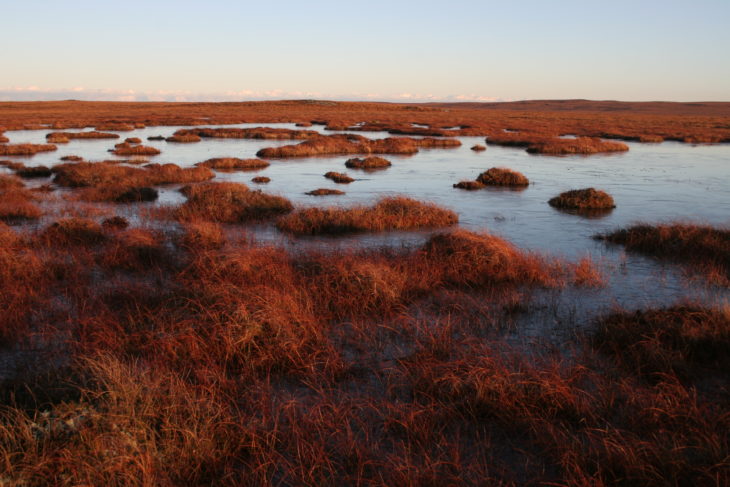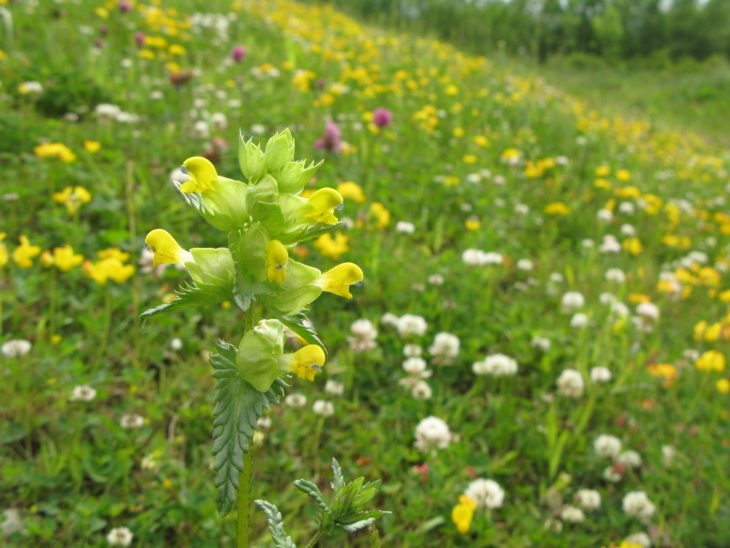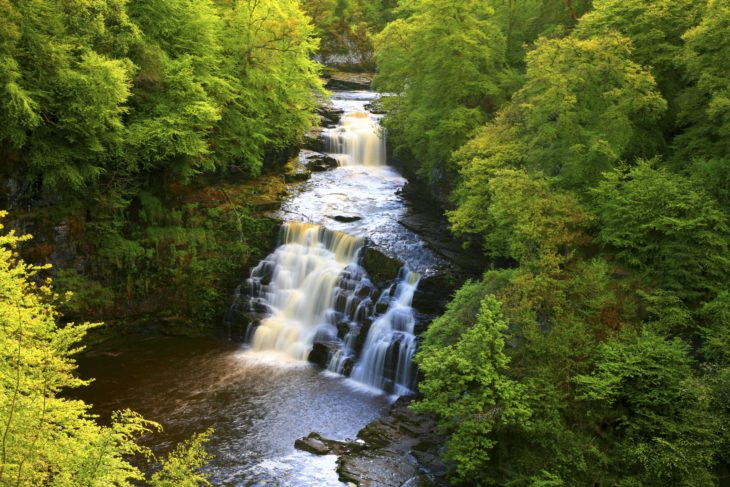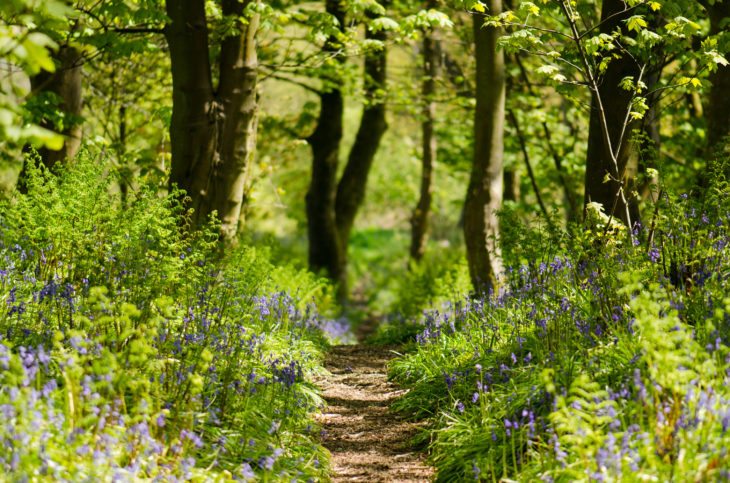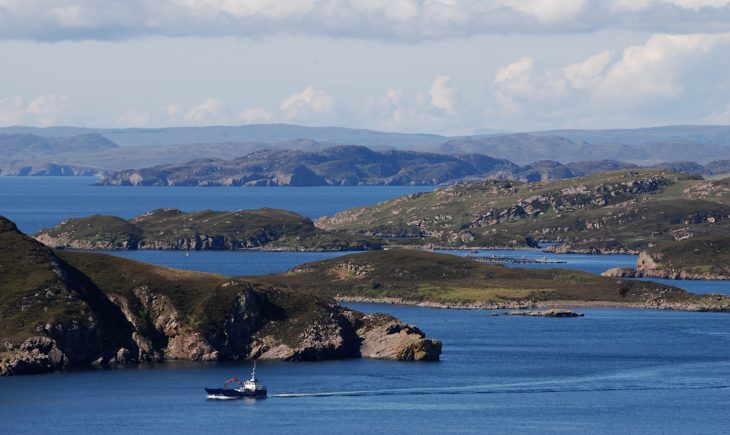Whilst many of Scotland’s wildlife-rich habitats are still under pressure, there is real hope for their future if we invest further in their protection, enhancement and restoration.
On land, farming, forestry and sporting interests continue to have profound impacts on wildlife. There is much more that these sectors could do to help nature’s recovery and the Trust will seek to work in constructive partnership with these and other sectors to secure a brighter future for nature in the coming decades. If landowners, farmers, communities and conservation bodies can work together at much bigger scales, we will be able to reconnect and restore habitats on a landscape-scale never before seen in Scotland. Collaboration is key to reversing the fortunes of Scotland’s wildlife.
With public money in increasingly short supply we must also ensure it is spent more wisely on good land stewardship which improves the health of ecosystems in both the uplands and lowlands. Scotland’s Land Use Strategy provides the basis for this change, but needs to be better resourced to make a difference now. More specifically the Trust would like to see the following:
Uplands
The main threats to Scotland’s uplands could be reversed with the development of regional land management plans that integrate, and balance, aims for different land use types across land-holdings. These plans need to be underpinned by a reformed subsidy system that incentivises lower stocking densities of sheep and cattle and encourages lower impact forestry practices such as continuous cover and wood pasture systems. Better regulation of deer and upland grouse moor management to reduce grazing and burning impacts in the uplands is also urgently needed.
Grasslands
The resilience of our remaining lowland flower-rich habitats sites can be improved by creating natural buffers around them and connecting them at a landscape scale through habitat networks. Alongside the protection afforded by both national and European protected sites, it is equally important that non-designated Local Nature Conservation Sites are protected from further loss through, for example, encroachment of ill-planned suburban development.
Available public money should support conservation areas and wildflower margins in farmed landscapes and herbicide and pesticide applications need to be reduced and even phased out in some areas. Lower stocking densities and better timing of grazing, according to site needs, are also required to retain and encourage wildflower meadows.
Freshwaters and wetlands
A catchment-scale approach needs to be taken to reverse damage to rivers and to effectively control the spread and impacts of invasive non-native species. The Trust supports the recommendations in the 2015 IUCN River Restoration and Biodiversity Report, specifically on the need for long-term planning and funding support for more natural, less interventionist river restoration techniques including the introduction of compensatory schemes such as land swap and ‘conservation covenants’.
Approaches that support the creation of riverside buffer strips on farms can help reduce diffuse pollution, slow and store flood waters and improve linkages between wildlife habitats. Recent investment in peatland restoration, through the Scottish Natural Heritage led Peatland Action project, has been a welcome step by the Scottish Government to mitigate and adapt to the effects of climate change. It is important that this investment becomes a long-term commitment.
Woodlands
The Trust believes there should be no net loss of native woodlands in Scotland and no loss at all of ancient, semi-natural woodland. Woodland expansion targets should be met through a mix of commercial forestry and native broadleaf woodlands with a minimum of half the planting being native Scottish species.
Application of the UK Forestry Standard must continue and further steps should be taken to build on the good work in recent years to encourage more ecologically sensitive designs that include open ground habitats and incorporate native species as an integral part of the forest.
A new duty should be placed on Scottish Ministers to promote sustainable forest management that delivers a wide range of public benefits. As in the uplands the better regulation of deer management in the lowlands is required to reduce numbers and the impact from browsing, allowing natural tree regeneration to occur.
Coast and seas
Information about which habitats and species are where in our marine environment needs to be improved to help understand and target action more effectively. It is important that good management measures are identified and put in place for the suite of protected areas in the marine environment (European Natura sites and Marine Protected Areas).
Marine spatial planning provides an opportunity to balance a range of user needs in the marine environment, helping businesses to operate within environmental limits whist improving the health of habitats. In the end, healthy, nature-rich seas are good for the economy, good for the coastal communities who depend on the seas for their livelihoods, and good for marine wildlife.
As with the Land Use Strategy, there is a need to focus resources on the development of Marine Regional Planning Partnerships to make progress more quickly. The inclusion of marine carbon sinks, so called ‘blue carbon’ habitats in Regional Marine Plans and Marine Protected Areas will make an important contribution to climate change mitigation and adaptation.
Urban
Within our urban areas there is a need to create and restore connected green networks which are wildlife-rich and also easily accessible by people on foot and bicycle. Existing ‘grey’ infrastructure should be retro-fitted with green features like green roofs, street trees, pocket parks and annual flower meadows. Urban rivers and burns need to be free from pollution and their bank-sides restored with native species. Where burns have been buried under streets and other infrastructure, we should consider re-exposing these lost assets and in so doing bring back valuable recreational and educational spaces to our towns and cities.
Projects that support local communities to reconnect with nature in urban areas and to take action to improve their quality need to be given long-term support. Planning policy should protect important local nature conservation sites from further loss and planning approvals for new developments need to be conditional on the inclusion of nature-rich features at multiple scales from building to neighbourhood to cityscape. Plenty of connected quality greenspace in towns and cities has big health and well-being benefits for people and should be considered an investment that pays off for society, and not seen as cost.

